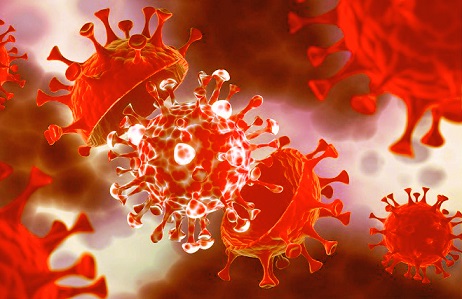Scientists warn a new SARS-CoV-2 lineage that will have more mutations and pose challenges will likely emerge early 2025
Nikhil Prasad Fact checked by:Thailand Medical News Team Nov 15, 2024 4 months, 4 weeks, 8 hours, 7 minutes ago
Medical News: The global scientific community is raising fresh concerns about the ongoing evolution of SARS-CoV-2, the virus behind COVID-19. Researchers from Inner Mongolia University and Inner Mongolia University of Technology in China have uncovered an alarming trend: the number of mutation sites in SARS-CoV-2 variants is increasing steadily over time. This discovery has significant implications for the pandemic's trajectory and the development of vaccines and treatments.
 Scientists warn a new SARS-CoV-2 lineage that will have more mutations and pose
Scientists warn a new SARS-CoV-2 lineage that will have more mutations and pose
challenges will likely emerge early 2025
This
Medical News report delves into the findings of a new study that has meticulously tracked the genetic evolution of the virus. By analyzing data from 61 SARS-CoV-2 variants, the researchers observed a near-linear increase in mutation sites, particularly in the spike protein - the part of the virus that facilitates its entry into human cells.
The Linear Trend of Mutations
Using regression analysis, the researchers demonstrated a strong correlation between the number of mutation sites in a variant and the time since its first appearance. The study revealed that the spike protein's mutation sites increase at a rate of approximately 1.27 mutations per month. These mutations accumulate over time, creating distinct macro-lineages, each with unique genetic traits.
For instance, the study identified a series of macro-lineages, labeled N, O, P, and Q. Each lineage represents a step in the virus's evolutionary journey, with newer lineages typically outcompeting their predecessors. Notably, lineage P was observed in recent months, and predictions suggest that lineage Q is on the verge of emergence. The researchers estimate that macro-lineage Q will appear by February 2025 and could dominate by the end of 2026.
The A-X Model and Predicting New Variants
A significant aspect of the study was the use of the A-X model, which combines existing mutation sites (Set A) with new, randomly generated mutations (Set X) to predict the emergence of novel strains. This model provided insights into how certain mutation thresholds lead to the transition between macro-lineages. For example, the study showed that lineage Q would likely emerge when the number of mutations exceeds 79 and become a dominant strain when the count reaches 108.
By applying this model, the researchers successfully predicted the emergence of lineage P in earlier studies. Their current findings suggest that lineage Q, with even more mutations, could introduce new challenges for public health strategies.
Implications for Public Health and Vaccines
The steady increase in mutation sites poses significant challenges for controlling the pandemic. Mutations in the spike protein can alter the virus's transmissibility, immune evasion capabilities, and resistance to treatments. This means that vaccines and therapies may need constant updates to remain eff
ective.
The findings also highlight the importance of global genomic surveillance to track and respond to these changes. Continuous monitoring can help anticipate the rise of new variants, enabling proactive adjustments to vaccines and public health measures.
Study Methods and Analysis
The study relied on data from outbreak.info, a global resource for tracking SARS-CoV-2 mutations. Researchers examined the earliest samples of 61 variants, analyzing both the number of mutation sites and the total accumulated mutations in the spike protein. Their statistical analysis revealed a discontinuous but overall linear trend in mutation accumulation over time.
This linearity, despite occasional jumps during lineage transitions, provides a reliable framework for predicting the future evolution of the virus. For example, the researchers calculated that the slope of mutation accumulation could predict the timeline for new lineage emergence with high confidence.
Broader Impacts of the Study
This research not only advances our understanding of SARS-CoV-2 evolution but also underscores the broader implications of viral mutations. As new variants emerge, they may carry unforeseen traits that could complicate efforts to control the pandemic. The researchers emphasized the need for adaptive strategies that account for the virus's dynamic nature.
Conclusion
The study's findings serve as a stark reminder of the challenges posed by SARS-CoV-2's rapid evolution. The near-linear increase in mutation sites highlights the virus's relentless adaptation, making it imperative for scientists, public health officials, and policymakers to stay ahead of the curve. Proactive measures, including enhanced genomic surveillance and agile vaccine development, are crucial to mitigate the impact of emerging variants.
The study findings were published on a preprint server and are currently being peer reviewed.
https://www.preprints.org/manuscript/202411.0947/v1
For the latest COVID-19 News, keep on logging to Thailand
Medical News.
Read Also:
https://www.thailandmedical.news/news/latest-updates-show-that-a-new-sars-cov-2-variant-called-mv-1-is-likely-to-be-the-next-contender-to-xec-variant
https://www.thailandmedical.news/news/german-study-finds-that-emerging-covid-19-variants-show-strong-resistance-to-antibodies-and-heightened-cell-entry
